The U.S. Food and Drug Administration (FDA) released an updated guidance in January 2025:
“Questions and Answers Regarding Food Allergens, Including the Food Allergen Labeling Requirements of the Federal Food, Drug, and Cosmetic Act (Edition 5): Guidance for Industry”
Their goal was to advise industry on how to identify Major Food Allergens (MFAs, commonly called Top 9 allergens) in ingredient lists so food labeling is less confusing for consumers. These recommendations are ‘suggested (not required)’ for industry at this time.
The general public still has a window open to comment on the guidance as of the date of this post. (Look for the ‘Allowing Late Comments’ label.)
When you read a label, here are the top 10 things you need to know about the FDA’s 2025 guidance for allergen food labeling:
1. Milk & Egg Changes:
For milk and egg ingredients, manufacturers should specify the source of the food ingredient. For example, ‘goat milk’ if milk from goats is in the food or ‘duck egg’ if the eggs from ducks are an ingredient.
2. Fish Clarification:
Fish need to be specified by species, and include Bony (think trout), Cartilaginous (think shark), and Jawless fish (think lamprey eels).
3. Shellfish Clarification:
Top 9 shellfish only include Crustacean shellfish (think shrimp, lobster etc.) and not Molluscan shellfish (think scallops, clams, etc). (Learn more about the differences.)
4. Tree Nut Changes:
The official Top 9 tree nuts are: Almond, Brazil Nut, Cashew, Filbert/Hazelnut, Macadamia Nut/Bush Nut, Pecan, Pine nut/Pinon nut, Pistachio, Walnuts. Coconut is no longer included as a Top 9 allergen.
5. Wheat Clarification:
Wheat includes wheat from the genus Triticum, specifically: Common Wheat, Durum Wheat, Club Wheat, Spelt, Semolina, Einkorn, Emmer, Khorasan, and Triticale.
6. Processing Aid Disclosure:
If a Top 9 allergen (like wheat flour) is used as a processing aid in the manufacture of a food, it does not have to be included as an ingredient, but it must be listed in the “Contains” statement.
7. Clarification on Highly Refined Oils:
The source of highly refined oils from Top 9 allergens (think peanut oil, soybean oil) must be listed in an ingredients label but do not need to be listed in a “Contains” statement. But, if the oil from a Top 9 allergen is crude or cold pressed, it would need to be listed both as an ingredient and in a “Contains” statement. (Learn more about peanut oil.)
8. Cross-contact Clarification:
Cross-contact occurs when an allergen is accidentally incorporated in a food that is not intended to contain it.
9. Free From Labeling Clarification:
Manufacturers can’t list an allergen in a “May Contain” statement if they use an ‘Allergen-Free’ (‘Free from’) label on the food. Voluntary labeling must be truthful and not misleading.
10. Retail and Food Service Food Labeling Clarification:
Food that is placed in a wrapper or container (think paper-wrapped sandwich or a to-go plastic clamshell) in response to a customer order at a retail and food service establishment does not have to comply with food allergen labeling requirements.
**If you’re itching to dive deeper, see Additional Information at the very end of this post.
Straight From The Source
‘Food Allergens/Gluten-Free Guidance Documents & Regulatory Information’: Find details here.
‘Questions and Answers Regarding Food Allergens, Including the Food Allergen Labeling Requirements of the Federal Food, Drug, and Cosmetic Act (Edition 5): Guidance for Industry’: Find details here.
The FDA is Allowing Late Comments. Find comment portal here.
More Insight On FDA Allergen Labeling Updates
- Article: Allergic Living
- Post: FARE
- Post: Kids with Food Allergies

Allergy Force is committed to helping people with food allergies live freely — with less fear, less anxiety, more confidence — through technology and education. The Allergy Force food allergy app is peace of mind in your pocket.. |
|
… |
|
Image: Marie Michele Bouchard on Unsplash
**Additional Information
BACKGROUND TO GET YOU UP TO SPEED
What are the regulatory agencies responsible for food and alcohol labeling?
- The FDA regulates all packaged foods.
- The U.S. Department of Agriculture (USDA) regulates meat, poultry, catfish and certain processed egg products.
- The Alcohol and Tobacco Tax and Trade Bureau (TTB) regulates labeling for alcoholic beverages, such as it is.
What is ‘food labeling law’ called in the U.S.?
- The Food, Drug & Cosmetics Act (FD&C Act) was passed in 1938.
- The FD&C Act was updated by the Food Allergen Labeling and Consumer Protection Act of 2004 (FALCPA.) FALCPA introduced and defined the term ‘major food allergen’ (MFA) and required that food regulated under the FD&C Act must declare the presence of each MFA on a food on the product label using the name of the food source from which the MFA is derived.
- Sesame was added as major food allergen #9 under the FASTER Act of 2021 (effective January 1, 2023).
What are the major food allergens (commonly referred to as the ‘Top 9 allergens’) in the U.S.*?
- Milk
- Egg
- Crustacean shellfish (by specific species, e.g., crab, lobster, or shrimp, etc.)
- Fish (by specific species, e.g., bass, cod, flounder, salmon, shark, tilapia, etc.)
- Tree Nuts (by type of nut, e.g., almonds, pecans, walnuts, etc.)
- Peanuts
- Soybeans
- Sesame
- Wheat
*In Canada, major food allergens are known as ‘Priority Allergens’ and number 11:
- U.S. Top 9 (with Molluscan shellfish included with Crustacean shellfish)
- + Mustard
- +Sulfites
*In the European Union, major food allergens are also known as ‘Priority Allergens’ and number 14:
- U.S. Top 9 (including all gluten containing cereals (like barley, oats, and rye, along with wheat))
- + Celery
- + Mustard
- + Sulfites
- + Lupin
- + Molluscan shellfish
What is the goal of the FDA’s recently released food labeling guidance for industry?
The goal is to advise industry on how to identify MFAs on ingredient lists so food labeling is easier to understand and less confusing for consumers. These recommendations are ‘suggested (not required)’ for industry.
THE NITS AND GRITS OF THE FDA GUIDANCE
What should you know?
MILK:
Milk does not only include milk from cows.
It is defined as milk from domesticated cows, goats, sheep, or other ruminants. Ruminants are hoofed mammals, including cattle, sheep, and goats, with a unique digestive system that allows them to better use energy from fibrous plant material when compared with other herbivores
What would you see on an ingredients label?
- Milk and milk ingredients from animals other than cows would be clearly identified, for example:
- The name of the animal source, such as “goat milk” and “whey (goat milk)” in the would be listed in the ingredient list, or
- “Contains goat milk” would be identified in a separate “Contains” statement, or
- Both.
EGG:
Eggs are considered eggs from domesticated chickens, ducks, geese, quail and other fowl.
What would you see on an ingredients label?
- Egg and egg ingredients from birds other than chickens would be clearly identified, for example:
- The name of the bird source, such as “duck egg” and “ovalbumin (duck egg)” would be listed in the ingredient list, or
- “Contains duck egg” would be identified in a separate “Contains” statement, or
- Both.
ALLERGENS THAT ARE BROAD CATEGORIES OF DIFFERENT SPECIES: TREE NUTS, FISH, CRUSTACEAN SHELLFISH:
For allergens that cover broad categories of different species, the ingredient list or the “Contains” statement cannot just list “tree nuts,” “fish,” or “Crustacean shellfish” as the MFA.
What would you see on an ingredients label?
You would see the specific type or species of an MFA category clearly specified, for example:
- The specific type of tree nut (e.g., almonds, pecans, walnuts) would be identified.
- The specific species of fish (e.g., bass, flounder, cod) would be named.
- The specific species of Crustacean shellfish (e.g., crab, lobster, shrimp) would be named.
FISH AND CRUSTACEAN SHELLFISH:
What types of fish are included in the MFA category ‘Fish’?
- Jawless fish, such as hagfish and lampreys
- Bony fish, such as trout, flounder, bass, salmon, tilapia, cod, mackerel, tuna, and grouper
- Cartilaginous fish, such as shark, rays, and skates
In the U.S. only Crustacean shellfish (such as crab, lobster, or shrimp) and ingredients that contain protein derived from Crustacean shellfish are MFAs. However, in the U.S., Molluscan shellfish (such as oysters, clams, mussels, or scallops) are not MFAs.
What would you see on an ingredients label?
- You would see manufacturers use the acceptable market name or the common name provided in the FDA’s Seafood List.
- However in the “Contains” statement, you could see manufacturers use just the generic name, e.g., “salmon” for chum salmon or “flounder” for tropical flounder.
TREE NUTS:
Tree nuts are complicated.
Tree nuts are the embryo of a tree that can form into a dry, hard fruit. They are known by many different botanical terms (e.g., berry, capsule, drupe, fruit, nut, seed) and there is no universally accepted botanical definition of the term ‘tree nut’.
To further complicate, multiple, interchangeable botanical terms are sometimes used to describe the same tree nut.
Scientific data on the allergenic potency of any individual nut varies greatly (in terms of quantity and quality) across the range of foods described by the general term ‘tree nut’.
The FDA has clarified the list of ‘tree nuts’ to only include those with substantial scientific evidence supporting their inclusion in the list of tree nuts the FDA considers MFAs.
What does the FDA consider a tree nut for food labeling purposes?
- Almond
- Brazil Nut
- Cashew
- Filbert/Hazelnut
- Macadamia Nut/Bush Nut
- Pecan
- Pine nut/Pinon nut
- Pistachio
- Walnuts (Black, California, English, Japanese/Heartnut, Persian)
What nuts are now off the MFA list?
- Beech nut
- Butternut
- Chestnut
- Chinquapin
- Cola/Kola nut
- Coconut** (a drupe)
- Ginko nut
- Hickory nut
- Lichee nut
- Palm nut
- Pili nut
- Shea nut
**Coconut was always a source of great confusion for consumers with food allergies. Its removal from the MFA list is an important labeling change to note.
What would you see on an ingredients label?
- If the tree nuts that are no longer considered MFAs are used as ingredients, they would still need to be listed by common or usual name in the ingredient list.
- But, they would not be included in the “Contains” statement when used as an ingredient.
- For example, Chestnut would be listed as an ingredient, but it would not be included in a “Contains” statement, while Pecan would be listed both as an ingredient and in a “Contains” statement, if the manufacturer uses a “Contains” statement.
WHEAT:
What is wheat?
Any species in the genus Triticum would be considered ‘wheat’ and therefore would be an MFA:
- Common Wheat
- Durum Wheat
- Club Wheat
- Spelt
- Semolina
- Einkorn
- Emmer
- Khorasan
- Triticale
SOY:
Soybeans could be listed as ‘Soy’ and ‘Soya’. Any one of those terms could be used to identify the food source of the MFA ‘soybeans’
INCIDENTAL ADDITIVES (PROCESSING AIDS):
Incidental additives are intentionally added in the manufacturing process as processing aids. They are not substances that are accidentally introduced due to shared equipment that has not been thoroughly sanitized.
What would you see on an ingredients label?
- If a processing aid (e.g., wheat flour) is used during the manufacture of a food, but is not an ingredient, it must be declared as an MFA in the “Contains” statement.
- Allergens present (accidentally introduced) due to cross-contact are not to be declared on the ingredients list or in the “Contains” statement.
HIGHLY REFINED OILS:
Highly refined oils are refined, bleached, deodorized oils that are derived from MFAs and the source of the oil needs to be specified (e.g. soybean oil or peanut oil). They do not need to be highlighted or included in a “Contains” statement.
What would you see on an ingredients label?
If the oil is not highly refined (e.g., it is cold pressed or crude) and is derived from an MFA, it needs to be:
- Declared by its common or usual name, or
- Declared in the “Contains” statement, or
- Both.
CONTAINS STATEMENTS:
Only MFAs can be listed in the “Contains” statement.
However, the FDA does not object to voluntary statements about other allergen information that are separate from the “Contains” statement, as long as they are truthful and not misleading. These are referred to as allergen advisory statements (e.g., “May Contain” statements).
They’ve also been called “Precautionary Allergen Labeling” statements (aka PAL statements). Get background on PAL statements here.
Advisory statements imply that a product is not supposed to contain a MFA, though it could be present. It is misleading to include an MFA in both a ‘Contains’ statement (MFA is intentionally added as an ingredient) and a “May Contain” statement (MFA is unintentionally included as an ingredient)
Allergen advisory statements cannot be used in lieu of good manufacturing practices and preventive controls. (CGMPs).
CROSS-CONTACT:
Cross-contact is when allergens are accidentally incorporated in a food that is not intended to contain it.
How does it happen?
- Improper rework addition (e.g., when a product containing a specific allergen is accidentally mixed with a product that does not contain the ingredient and labelling is not changed to reflect it.)
- Product carryover due to use of common equipment & production sequencing,
- Presence of an allergenic product above exposed product lines.
Cross-contact represents a potential hazard for consumers. The FDA has established requirements for food allergen preventative controls, as well as regulates CGMPs for food and dietary supplements to protect food from food allergen cross-contact.
When manufacturers can not completely eliminate allergen cross-contact, some manufacturers include allergen advisory statements (explained above) to warn consumers about potential allergen cross-contact.
Allergen advisory statements (e.g., “May Contain”) is not a substitute for adherence to current good manufacturing practices or food allergen preventive controls and must be truthful and not misleading.
ALLERGEN-FREE (‘Free-From’) CLAIMS:
Companies can place voluntary statements to inform consumers that certain allergens are absent from their products (e.g., “allergen-free” claim) If such voluntary claims are made they must be truthful and not misleading.
Milk-free claim should mean there is no milk allergen in the product, including unintended milk allergen presence due to cross-contact.
What would you see on an ingredients label?
- Allergen-free claims should not have an advisory statement that includes the same allergen.
- A product with a milk-free claim could not include milk ingredients in a “May Contain” statement.
RETAIL AND FOODSERVICE ESTABLISHMENT COMPLIANCE WITH FDA FOOD ALLERGEN LABELING REQUIREMENTS:
Foods packaged by a retail or foodservice establishment that are offered for sale for human consumption must comply with the FD&C food allergen labeling requirements.
These requirements, however, do not apply to food that’s placed in a wrapper or container in response to a consumer’s order (the paper or box holding a sandwich made on demand to fulfill a consumer’s order.)


